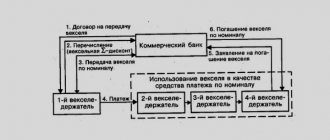Salary concept
It is represented by the exact and constant amount of the employee’s earnings, which is paid monthly when the allotted time is worked. Funds are accrued for the performance of labor duties specified in the employment contract.
To receive a payment, the following conditions must be met:
- the employee follows the provisions of the job description;
- works during the month according to the work schedule;
- present at the workplace.
Attention! An employee’s salary differs from salary, since bonuses, allowances, compensation and incentive payments are also included in the total earnings.
If an employee misses work without good reason, the employer can reduce the salary, for which only the time actually worked is taken into account. Although the amount is fixed in the employment agreement, it must change regularly, since indexation is required based on the level of inflation and the minimum wage.
How to arrange a transfer at the request of an employee
Both the employee and the employer have the right to initiate the transition of an employee to full-time work. The instructions depend on this. Here's how to transfer an employee to full-time if the initiator is the employee:
Step 1. An official application is submitted to the employer with a request to transfer to full time.
Step 2. If the employer accepts the offer, he draws up:
- agreement to change the terms of the employment contract;
- order to change the rate.
Additional entries are not made in the work book, because the employee remains in his previous position.
After the order is issued, the employee goes out for a full day.
Determination of tariff rate
The tariff rate is represented by a fixed payment, but it is paid not for a month, but for a certain unit of time. It is usually determined for work for one day or hour. Therefore, the exact salary is calculated depending on the period worked.
When using a tariff rate, monthly earnings are calculated individually, taking into account the provisions of the work schedule. For example, an employee works at a rate of 190 rubles. for 1 hour of work. During the month he worked 185 hours, so his salary is: 185 * 190 = 35,150 rubles.
To receive payment, you must not only be at the workplace, but also perform work duties, as well as comply with other labor discipline requirements. The main advantage of using a tariff rate is the ability to independently calculate earnings, as well as to balance wages with the efforts invested.
How to make an application
There are no legislative requirements for an application to switch to full-time work; the employee presents his request in free form, taking into account the following recommendations:
- the document is drawn up in writing. It must be submitted officially, under the signature of an authorized employee. In the event of a dispute, the employee will be able to prove that the appeal was filed;
- the document contains: Full name and the position of the addressee - the head of the organization, full name, position and personnel number of the applicant, a request for a full-time transfer - the text of the request should be written unambiguously, excluding its double interpretation - and the start date of full-time work;
- the application is signed and dated by the applicant.
Differences between indicators
The rate and salary have many differences, but the following points are considered the most important:
- according to the salary, the salary is paid twice a month, and at the tariff rate it can be paid daily or once a week;
- the salary is issued only during the performance of labor duties, and the rate is calculated for hours worked.
It is recommended that you carefully review these differences before signing an employment contract. People usually work on a salary basis, so they receive a monthly salary, the amount of which is specified in the agreement. The pay rate is often offered to waiters, entertainers, and others who wish to be paid at the end of each shift. In many positions, job performance is more important than time spent with the company, so a fixed payment is appropriate in these circumstances.
How to create an order
The order to change the rate does not have a mandatory form, but contains the following information:
- FULL NAME. and the position of the employee in respect of whom it was issued;
- the fact of changes in working conditions and how they were expressed: it is necessary to register how many hours a day the employee now works, the work schedule and the new salary;
- the date on which the changes take effect;
- basis for change;
- list of persons responsible for execution of the order.
The order is assigned details: date of publication and number. The document should be executed on the organization’s letterhead or indicate information about it: full name, INN, OGRN, address. The order is signed by the head of the organization or a person authorized to sign such documents by power of attorney or constituent documents.
All employees to whom it concerns are familiarized with the order and signed.
Similarities between indicators
The salary in the salary takes up the largest part of the payment, as does the tariff rate. Additionally, compensation, incentive transfers or additional payments are included in earnings.
Salary and rate have the following similar parameters:
- money is paid at the end of a specified period, represented by a day, week or month;
- it is possible to calculate payments per hour, day or other period;
- To evaluate the work of any employee, a certain fixed rating is used.
If a person went on vacation or sick leave during the month, the fixed amount is reduced, so in any case the actual period worked is taken into account.
Both payroll systems take into account a certain tariff. When setting any indicator, the qualifications, level of responsibility and experience of the hired specialist are taken into account. These values are influenced by the situation on the labor market and the possibility of replacing an employee with another employee.
The first formula for an accountant
The first option involves using the monthly standard of hours worked as a starting point. There is no need to calculate this indicator: it can be found in accounting programs (for example, ConsultantPlus) and open Internet sources.
The cost per hour is determined as follows:
Hourly rate = Employee salary / Official monthly standard.
Example
Manager Vasily Petrov works in the trading floor in shifts, his monthly salary is 30,000 rubles. According to the established schedule, Vasily worked 150 hours in February, and 155 hours in March.
The accountant who will calculate the manager's salary must take the official monthly standard from the Internet or another source. In the months mentioned, this figure was 159 hours.
Let's start the calculations:
- The hourly tariff rate in each month worked is 188.68 rubles (calculated using the formula 30,000 rubles / 159 hours).
- In February, Vasily earned 28,301.89 rubles (determined by the formula 188.68 rubles * 150 hours).
- For March, citizen Petrov’s salary will be 29,245.28 rubles (188.68 rubles * 155 hours).
- The total amount to be issued for two months is 57,547.17 rubles (29,245.28 rubles + 28,301.89 rubles).
The described calculation option is simple and accessible. It won't take much of the accountant's time. It has one significant drawback: the inversely proportional relationship between the number of working days in a period and the amount of salary.
The result is injustice: an employee can receive a higher salary for a month in which he worked less, and a lower one for a period in which there were few holidays and weekends.
Is it possible to determine the tariff rate based on salary?
If a person knows how much he can receive per month, then he can easily determine the payment per hour or other period. For example, an employment contract specifies a fixed payment of 40 thousand rubles. A citizen works 22 days, 8 hours a month.
The tariff rate for 1 day of work under such conditions is: 40,000 / 22 = 1818 rubles. The payment per hour is: 1818 / 8 = 227 rubles.
Company managers independently choose a remuneration system, which takes into account the scope of work and the characteristics of the employees’ job responsibilities. Tariff rates are often chosen for the production or service sector, while salaries are more suitable for trade representatives.
We remind you that even if you thoroughly study all the data that is in the public domain, this will not replace the experience of professional lawyers! To get a detailed free consultation and resolve your issue as reliably as possible, you can contact specialists through the online form .
When to transfer to full time
Changing an employee's regime is not a transfer, since it does not imply a transition to another position or to another department. The employee remains in the same position, but begins to work more or less, performing the same functionality. Changing the employee's rate is permissible at any time, provided that the employee and the employer agree on this issue. In practice, this procedure occurs when:
- a woman returns from maternity leave, during which she continued to work part-time;
- the volume of part-time employment changes.
A translation always requires the signing of an agreement between the parties:
- new employment contract. To implement this method, it is necessary to terminate the existing contract, which establishes part-time work, and enter into a new one - full-time. In fact, this procedure means the dismissal of a citizen and his rehiring. This approach is justified when an employee who worked part-time for supplies makes this place his main and full-time job; in other cases, such a procedure is not justified;
- an additional agreement to the existing employment contract, which establishes a new work schedule and proportionally increases remuneration for work.
Differences from salary
The rate and fixed payment are set during the interview and specified in the contract. But wages also consist of other cash receipts, which include bonuses, allowances or incentive transfers, as well as compensation. The difference is that final earnings cannot be predicted, and they are not recorded in any official documentation.
Transfers depend on the results of activities, as well as on the efforts of the employee. Often, when the plan is exceeded, specialists receive large bonuses. Even from these payments, the employer is required to pay taxes and insurance premiums.
For example, an employee of a production organization receives a fixed payment of 40 thousand rubles. He works 22 days a month, and is also obliged to fulfill the plan of creating 1 thousand blanks. Suppose he exceeded the plan by 200 products in a month, and for each he receives an additional payment of 100 rubles, therefore, his salary is 42 thousand rubles.
How to process a transfer at the initiative of the employer
Changing an employee’s work schedule at the initiative of the employer does not imply the filing of an application by the employee. Otherwise, the question of how to formalize the transfer of an employee to full time is resolved in exactly the same way:
- The parties sign an agreement that changes the terms of cooperation.
- The employer issues an order.
If the employee does not agree to switch to full-time work, the employer does not have the right to unilaterally change the terms of cooperation with the specialist, but has the right to implement the procedure provided for in Art. 74 of the Labor Code of the Russian Federation, which presupposes:
Step 1. Written notification to the employee that organizational or technical working conditions have changed in the organization, which has led to the need to change the terms of cooperation with the employee. The notice must again invite the employee to voluntarily sign the agreement.
Step 2. If the employee refuses to sign the agreement even after official notification, the employer is obliged to offer the citizen an alternative place.
Step 3. If there are no alternative places or if the work refuses the proposed options, the employment contract is terminated according to clause 7 of Art. 77 Labor Code of the Russian Federation.








